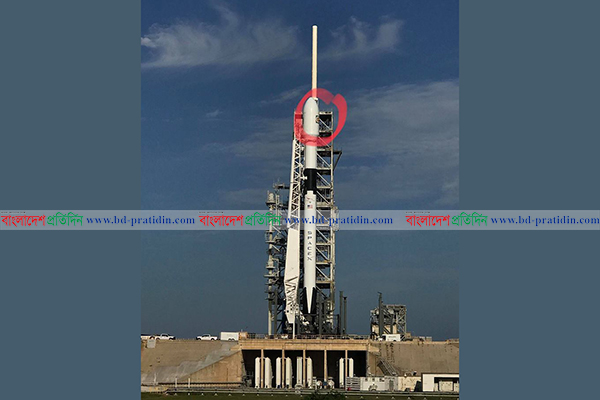After long anticipation, the dreams of Bangladesh are finally going to be fulfilled.
Bangladesh is going to launch satellite in space as the 57th country in the world. On Thursday, the country's first satellite Bangabandhu 1 going to space. The first satellite Bangladesh is interested in learning about the general public. Let's know some of the important information. BBC News
Satellite type: There are over two thousand satellites in more than 50 countries in space. These include - Weather Satellite, Observer Satellite, Navigation Satellite etc. However, BS-1 is the Communication and Broadcast Satellite.
Criteria: The main function of the Bangabandhu Satellite is to ensure satellite television services. This can be done with DTH or Direct to Home Dish Service.
Apart from this, satellite can be used to provide optical cable or submarine cable in places where the Internet connection can be ensured.
Satellite footprint: The location of Bangabandhu satellite is 119.1 degrees east longitude orbit. Its footprint or coverage will extend from Indonesia to Tajikistan.
Through the strong KU and C band, it will cover the whole of Bangladesh, SAARC countries, Philippines and Indonesia.
Satellite operation: It will take 8-11 days for Satellite orbit to travel 35 thousand 786 kilometers from Earth station. And ready to be fully prepared in 3 months.
After three years, Bangladesh will look after it with the help of Thalass Allenia. After this it will be controlled from the Batbunia Earth Station in Gazipur and Rangamati, completely by Bangladeshi engineers.
Satellite building: 3.7 ton weight Bangabandhu satellite design. This made France's company Thalass Alenya Space. And the rocket that is taking it into space has made it to the US SpaceX.
Launchpad is from the Launchpad in Florida.
There are 40 transponders of Bangabandhu satellite. Of these, foreign currency earnings are possible for use in 20 countries and 20 fares. Apart from its own satellites, the reliability of global telecommunications will end. Bangabandhu Satellite 1 will play an important role in telemedicine, e-learning, e-research, video conference, defense and emergency communications.
